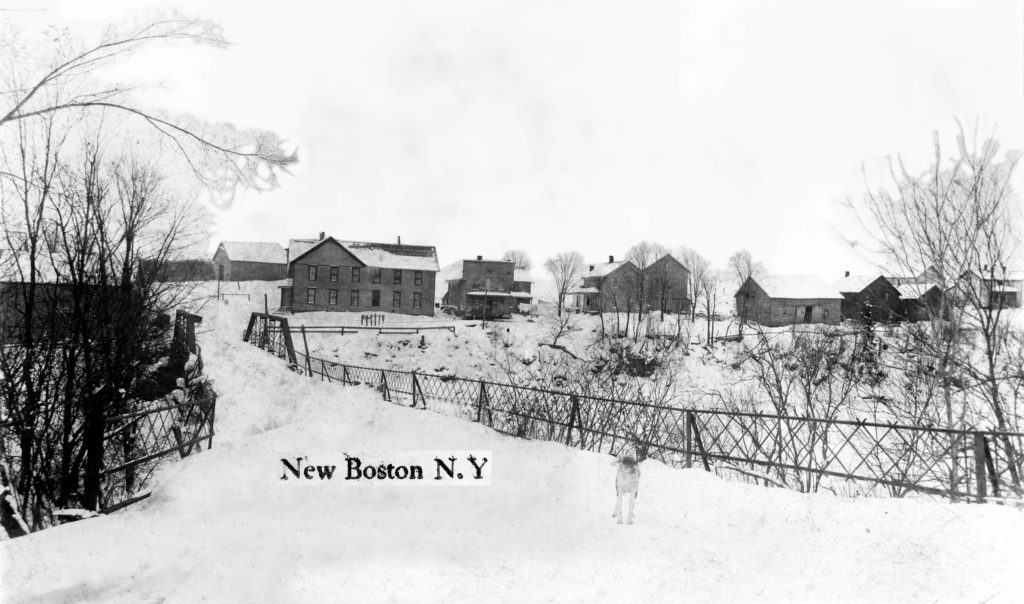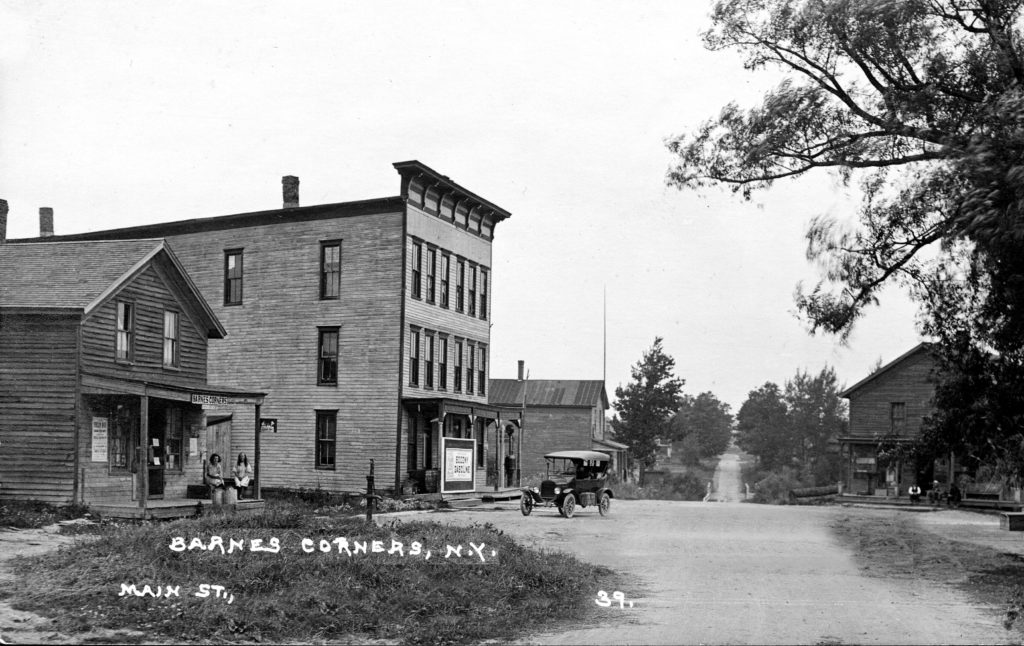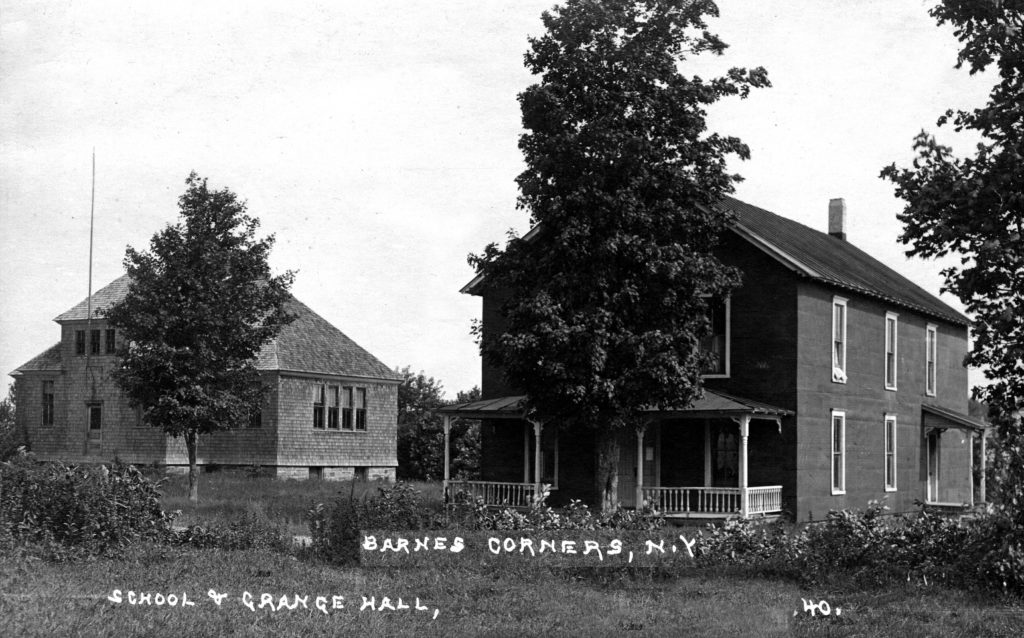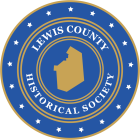The Town of Pinckney in Lewis County, New York was formed on February 12, 1808. It was the second town formed, Denmark being the first, after Lewis County was erected. (At the time of its formation, Lewis County consisted of only five towns, namely: Leyden; Lowville; Turin; Harrisburg; and Martinsburg.) Pinckney was formed from tracts of land taken from the towns of Harrisburg and Harrison (now the town of Rodman) and named by the state legislature in honor of Revolutionary war general and statesman, Thomas Pinckney of South Carolina.

Settlement was mainly by Americans, from the New England states, and began several years before the Township was formed. The first known settlers were Samuel and Joseph Clear, who located in the southwest part of the town in about 1803. They soon left, however, and the next known to settle in the area were Ethan Russell and J. Greene of Rhode Island in 1804. Then in 1805 Levi and Elisha Barnes, from Middleton, Connecticut settled in what we now know as Barnes Corners, which was named for Elisha. They also later left the area, either just before or after the war of 1812, sources differ. When Elisha left, he apparently sold his property to Eber Lucas, also from Middleton, Connecticut, who had arrived in 1806.
By 1809, John W. Lucas, James and Stephen Hart, James Armstrong, Phineas Woolworth, Joel Webb, Silas Slater, David Canfield and several Stoddard families had come into the town. Mr. Canfield made the first real improvement in the town when he cleared a large area of land in what is now known as New Boston, erected a sawmill and built a bridge over Deer River.
Other early settlers were Richard Dye, Asa Cooley, Elijah Yarrington, Henry Warner, Noah and Jesse Merwin, Ruben Waite, Ira Pollack, Amos Barrett, Mr. Needum, Daniel Hall, Orasmus Streeter, and Ira Odell, who built the first sawmill in Barnes Corners.
As the town grew and changed, so did the families. The first birth occurred in the family of James Hunt or John Stoddard and the first death was Mrs. Elisha Moody.
Schools and churches were built and a Grange Hall was erected. Town government was formed, post offices assigned and businesses created.
The first school in Pinckney was the Dye Schoolhouse, which was built near the Richard Dye home. The first church services were also held in the schoolhouse. The first school in Barnes Corners was held in the log cabin built by Elisha Barnes, where the Barnes Corner Hotel stood. As the years progressed, schools were located in several areas in the town. There were also schools at New Boston, Cronk’s Corners, on the 7 x 9 road (White School District), Pinckney Corners, the Hardscrabble School located about 2 miles down the Copenhagen Road from Barnes Corners, and the River Road School.

There were several churches in the town at different times. The First Methodist Episcopal Society formed and erected a meeting house at Boynton’s Corners on August 8, 1831. The Pinckney Corners Methodist Episcopal Church was built in 1851. The First Baptist Church of Barnes Corners was built in 1856, and a Methodist Church was built in Barnes Corners in 1857. Also started in 1856 and finished in 1860 was the Roman Catholic Church at New Boston. The first building for the Catholic Church was originally one and 1/2 miles from New Boston. At present, only the Methodist Church survives to conduct services.
When the town government was formed in 1808, the first town meeting was held in the home of Stephen Hart, where Ethan Green was elected the first supervisor. An interesting note; although there had been a Town Clerk for many years, the first marriage license wasn’t issued until 1908. It was issued by Charles D. Lucas for the marriage of Hattie Edwards to Harry Larkin.
Post offices were first located at Boynton’s Corners, Cronk’s Corners and Barnes Corners. They have since closed and the residents now receive their mail rural route from Copenhagen.
As in any period of history, the first settlers in the area are often farmers. So it was in Pinckney. The economy was agriculturally based (as much of it is also today) and most everything for a family’s use was produced at home. Before businesses were developed and built within the town, most people had to travel to Watertown, Copenhagen or Lowville for the things they couldn’t provide for themselves. By 1840, though, businesses had started to spring up.
The first tavern and hotel was built by Horace Lucas in 1846. It was located in Barnes Corners on the South Main St. (the 7 x 9 Road) just south of Elisha Barnes’ log cabin on the corner. The first building used as a store in Barnes Corners was built in the 1840s by Mr. Delano. It was located where the cheese factory now stands but was brought, moved and turned into a store by Joseph Davis. William Mahar built and conducted, for many years, a store at New Boston and Amos Stoddard was engaged for many years in the mercantile business in a store located about 3 1/2 miles from Barnes Corners on the Copenhagen Road.

Many more stores, shops and businesses opened and closed over the years. There were general mercantile stores, feed stores, harness shops, blacksmith shops, a carriage shop, and two more hotels, the Savell House, built in 1887 (later called the Hotel Curtis and then the Barnes Corners Hotel, now closed) and the Central House. The Central House was built in New Boston in 1888 and operated as a hotel until 1917 when it was turned into a store. Also, there was a drugstore, barbershops, weavers, dressmakers, milliner’s (hat makers), grocery stores, a meat store, cheese factories, a creamery (where the Grange Hall in Barnes Corners now stands), sawmills, a manufacturer of agricultural implements, a furniture factory (made and repaired furniture, also made sleighs and skis), a hoop factory, a printing press, a shingle mill, a gristmill (the gristmill was later changed into a potash and cooper factory), a gun shop, an opera house and pool room, and even a 10 cent store. At different times, there were four doctors who practiced in the town, a watch repair shop, and (for when the doctors could do no more and your time had run out) undertakers.
The residents of Pinckney were not without amusements and pleasures. The Grange at one time had a ball club that played several surrounding communities. Plays, dances and programs of interest were put on by the Grange. The churches and Ladies Aid Society held dinners, socials and bazaars. The schools held field days, and dances were held at nearly all the hotels in town on a weekly basis. Then, for 10 years, 1933 – 1943, Barnes Corners held the community Old Home Days that was sponsored by both the Grange and the Methodist Church.

History, as they say, repeats itself. The town of Pinckney was settled and then nearly abandoned. Many businesses that prospered no longer exist. Today there are few commercial businesses in the town outside of Barnes Corners. Although these businesses are concentrated in a small area, they serve all the residents and also a fluctuating but growing population of campers, hunters and tourists. Perhaps Pinckney is again being slowly settled; for oft times they come for the weekend and stay for lifetime.
